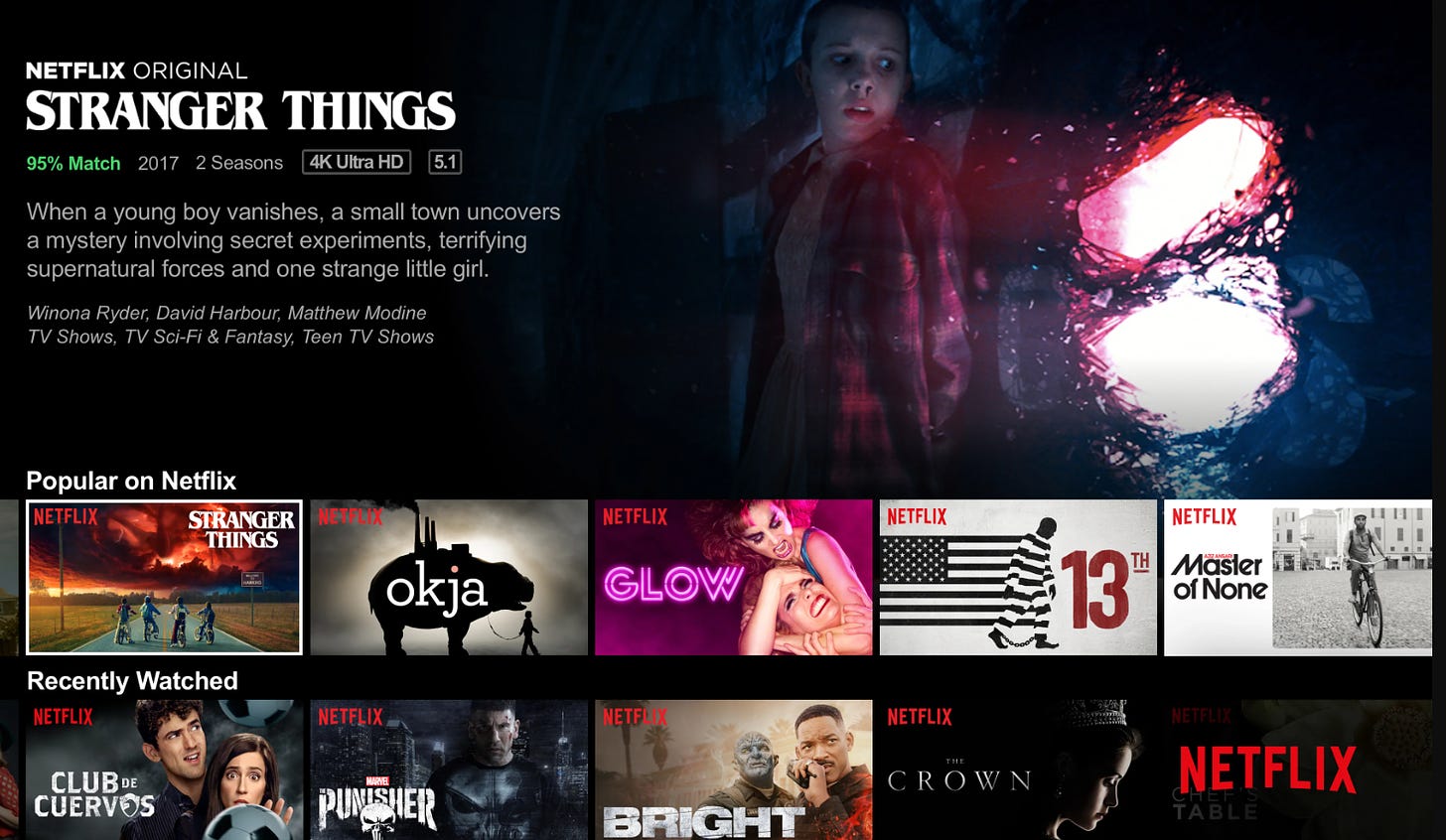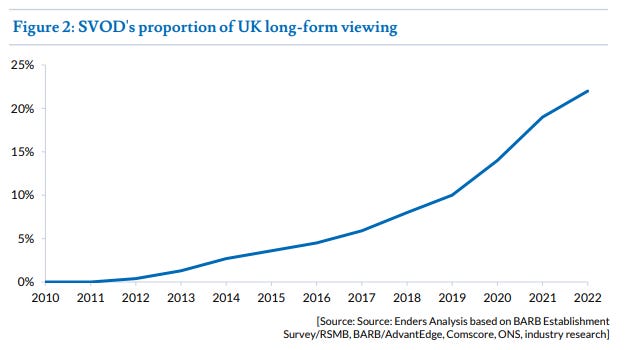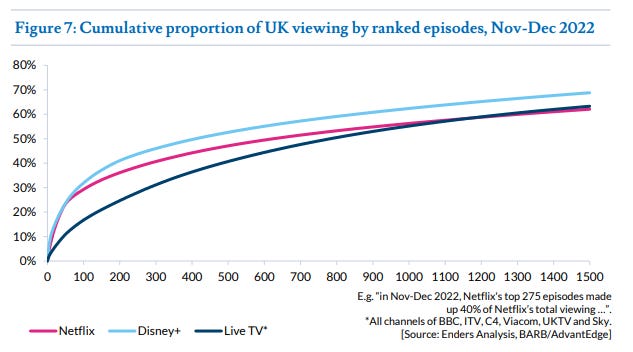Netflix regularly tells us what its most popular shows are, but one is always missing. Not because Netflix tries to hide a certain series but because this show isn't technically a show.
It's the pseudo-show called "Browsing Netflix to see what's on there, laughing at the random descriptions, then giving up because there’s too much choice and watching Gogglebox". My wife and I spend A LOT of time doing this. I'd love to know just how much, vs the shows and movies we've watched.
The idea of limitless options sounds good - I remember when the online version of Netflix launched in the UK. The selection of movies was small, so I stuck with my LoveFilm DVDs by post subscription. We equate breadth of range as a strength, indicating that there must be something for me - particularly when comparing SVOD (subscription video on demand) to linear TV.
Humans are joyously paradoxical, however - according to a new report by Enders Analysis, we're ignoring the breadth of choice on video streaming platforms, and all tend to watch the same things.
The top 250 episodes on Netflix account for 39% of the service's total viewing. By comparison, the top 250 episodes on linear TV (still the dominant mode of watching TV, by the way) account for 28% of viewing.
There's more choice in the new worlds of Netflix and Disney+, but those new worlds produce startling familiar viewing habits. We want to watch the buzzy shows and movies everyone's talking about, like The Menu or Squid Game, so we can be part of the conversation at work or in our WhatsApp groups. The difference from "did you see Big Brother last night?" 25 years ago is that our window for being part of the zeitgeist is much broader. It's entirely possible to wait and see which shows are the most meme-d before deciding what to watch (the prevalence of memes undoubtedly hastened my desire to watch Birdbox and Squid Game in particular).
This choice paradox is nothing new - one of the things I vividly remember from my music industry days is a study which showed that the most popular radio station would be the one that played the current top ten over and over and nothing else. Consumers want more options but need help with too many options, and so seek validation in how others have chosen.
It’s why algorithmic curation plays such a large role in our online lives. The media loves to rail against algorithms and blame them for society's ills, but it’s clear that some kind of curation is essential. Otherwise, audiences feel paralysed by too much choice or worry they're missing out on something important. Existing curation models may be blunt and ripe for significant improvement, but without them, any platform operating at significant scale would be a mess.
The choice paradox in our media consumption habits speaks to a need for balance - to feel connected to what's happening in the broader culture to a greater or lesser degree while also satisfying our individual tastes. A balance between the top 10 trending shows and bingeing obscure HBO shows like Barry that apparently no one else in the UK watches apart from me (as an example).
It's a balance that brands and businesses need to get right too. Most big companies have lots going on, and there are invariably competing demands on comms teams' time, with everyone thinking their product or project is the most critical thing in the world. And there's absolutely a need for businesses to speak to a portfolio of activity to show they've got plenty going on.
But this needs to be balanced against a consistent repetition of a set of core messages to make sure that your brand is seen as standing for something. It's crucial for brands that speak directly to consumers. Those consumers frankly don't care about your brand and your carefully crafted 15 sustainability plan. They just want a nice cereal at the lowest possible price. You need to work hard to build an association between your cereal and being an ethical company that does good things for the world. That comes from a focus on frequency and salience (being top of mind).
This is an excellent opportunity to re-share one of my favourite quotes on brand comms by Richard Reed, co-founder of Innocent Drinks: "It's about simplification, and then it's about exaggeration. That's what great brands do. You boil it down to a few simple, single words representing what you stand for. And then you use all the tools to dramatise and exaggerate."
To put Richard's advice through my lens of choice, you need to provide your audiences with a sense of choice and variety by mixing up how you deliver and execute your messaging. But the core of what you say remains the same - your version of the most-watched Netflix shows and the top ten most-played songs on Spotify. If you can get that balance right, you'll be presenting your business to your audience in a way that feels fresh and familiar simultaneously - and avoid bogging them down with any choice paralysis.





